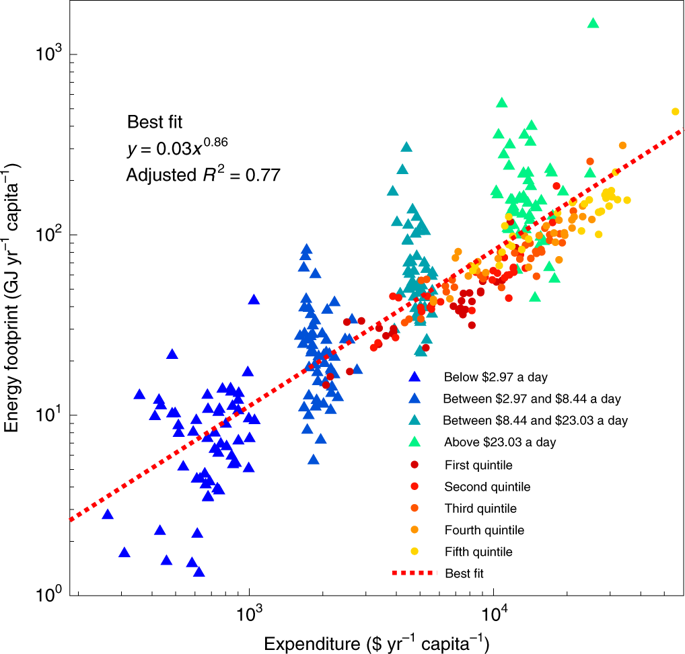Nature Energy ( IF 49.7 ) Pub Date : 2020-03-16 , DOI: 10.1038/s41560-020-0579-8 Yannick Oswald , Anne Owen , Julia K. Steinberger

|
Inequality in energy consumption, both direct and indirect, affects the distribution of benefits that result from energy use. Detailed measures of this inequality are required to ensure an equitable and just energy transition. Here we calculate final energy footprints; that is, the energy embodied in goods and services across income classes in 86 countries, both highly industrialized and developing. We analyse the energy intensity of goods and services used by different income groups, as well as their income elasticity of demand. We find that inequality in the distribution of energy footprints varies across different goods and services. Energy-intensive goods tend to be more elastic, leading to higher energy footprints of high-income individuals. Our results consequently expose large inequality in international energy footprints: the consumption share of the bottom half of the population is less than 20% of final energy footprints, which in turn is less than what the top 5% consume.
中文翻译:

收入群体之间以及消费类别之间国际和国内能源足迹的巨大不平等
能源消耗的不平等,无论是直接的还是间接的,都会影响由能源使用产生的利益分配。需要采取这种不平等的详细措施,以确保公平合理的能源过渡。在这里,我们计算最终的能源足迹;也就是说,在高度工业化和发展中的86个国家/地区中,收入和收入在商品和服务中所体现的能量。我们分析了不同收入群体使用的商品和服务的能源强度,以及其需求的收入弹性。我们发现,能源足迹分布的不平等在不同的商品和服务中有所不同。能源密集型商品往往更具弹性,导致高收入个人的能源足迹更大。因此,我们的结果暴露了国际能源足迹中的巨大不平等:











































 京公网安备 11010802027423号
京公网安备 11010802027423号